Our Blog - Milan Day 3
I don't know anything about the Transformer's, but these were in Piazza del Duomo one day. I think the yellow one is Bumblebee but the red one I have no clue.

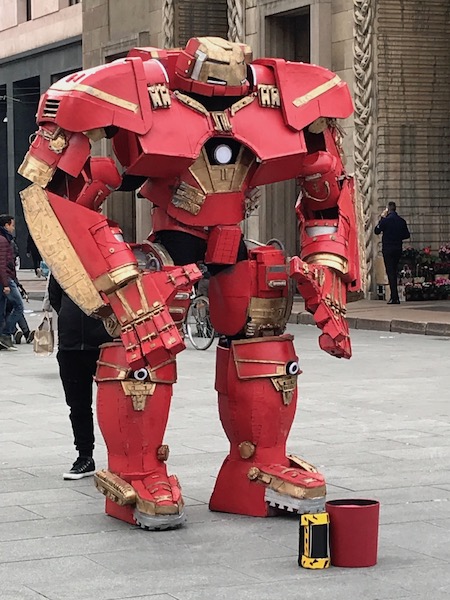
In the middle of Piazza della Scala is a monument to Leonardo da Vinci by sculptor Pietro Magni. There are quite a few things related to him in Milan, as much of his earlier working life was spent in the service of Ludovico il Moro here. Leonardo worked in Milan from 1482 until 1499 and returned multiple times to Milan at various times. His most famous Milan work is the Last Supper, which you will see shortly.
This is the courtyard of the Palazzo Brera, an art museum in the Brera district. The museum itself contains a collection of Italian paintings and is the main public gallery for paintings in Milan. In the courtyard is a bronze copy of Napoleon as Mars the Peacemaker, a colossal heroic nude statue. The original marble was done from 1802-1806 (now in the Duke of Wellington's London residence) and this 1811 bronze copy was cast in Rome by Francesco Righetti. Supposedly when Napoleon saw the original in the Musee Napoleon in April 1811, he refused to accept it, calling it "too athletic" and banning the public from seeing it.
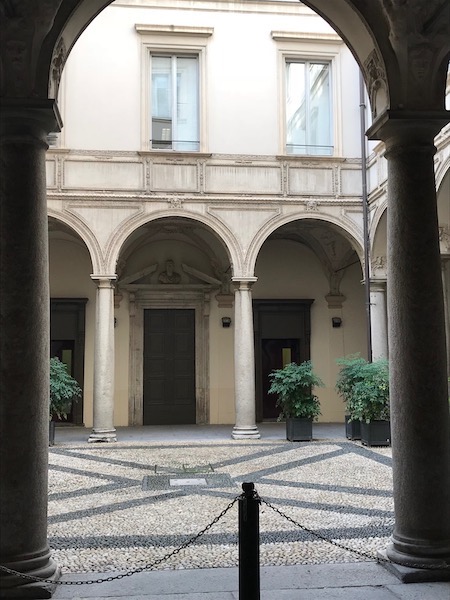
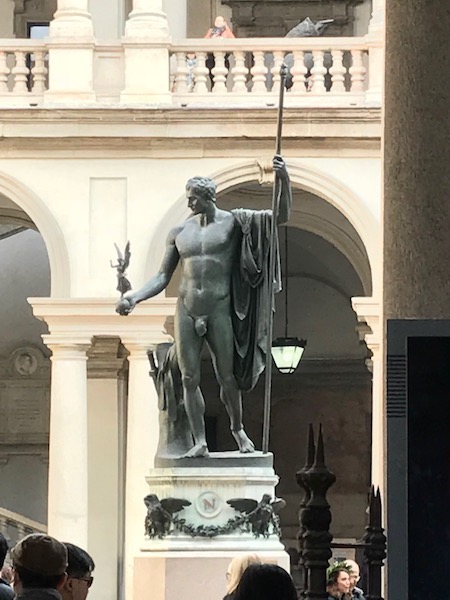
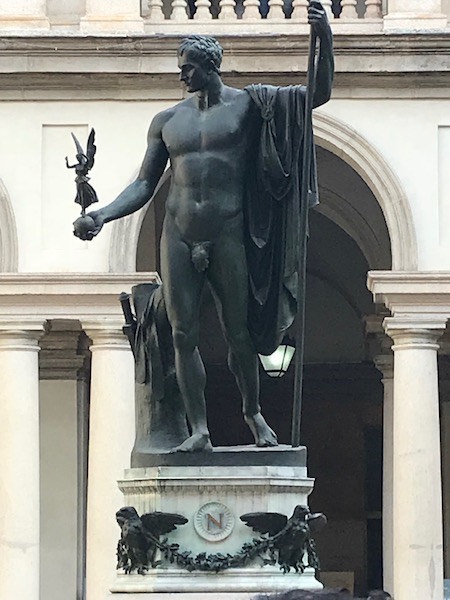
Sforza castle was started by another of the Visconti family in 1370 and was the main residence of the lords until they were ousted in 1447 and it was destroyed. Francesco Sforza reconstructed it in 1450 and it continued to be enlarged and modified over many decades. The castle was damaged by assaults from Italian, French and German troops over the years, and so a bastion was added, and it became a defendable fortress. In 1550, work began to adapt the castle to modern fortification style, as a hexagonal (originally pentagonal) star fort, by adding 12 bastions. While the outer fortifications have been removed, you can still make out the mote around it (although no water now), along with multiple defensive towers. As we came up to the castle, you can see it is still a bit of an imposing sight, even without the original outer defensive walls. The fountain in front is referred to as the wedding cake by locals since the shape of the water resembles a tiered wedding cake.
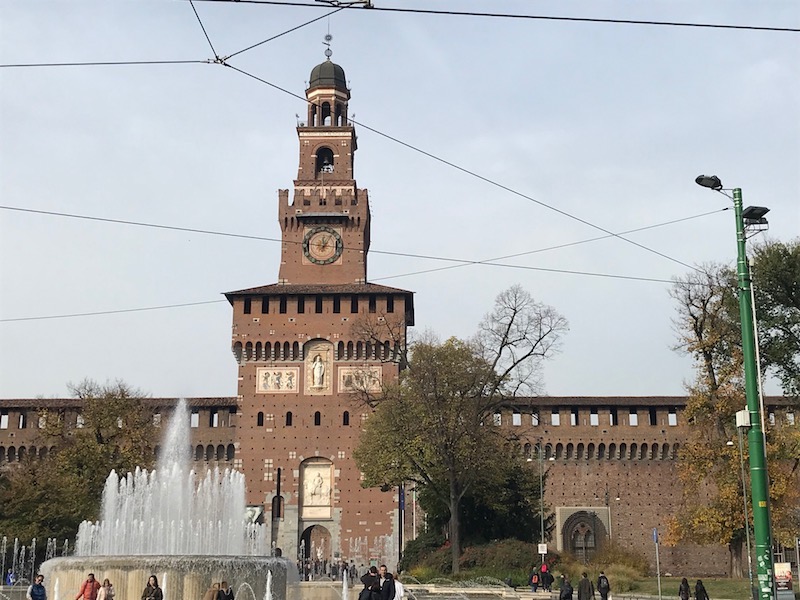

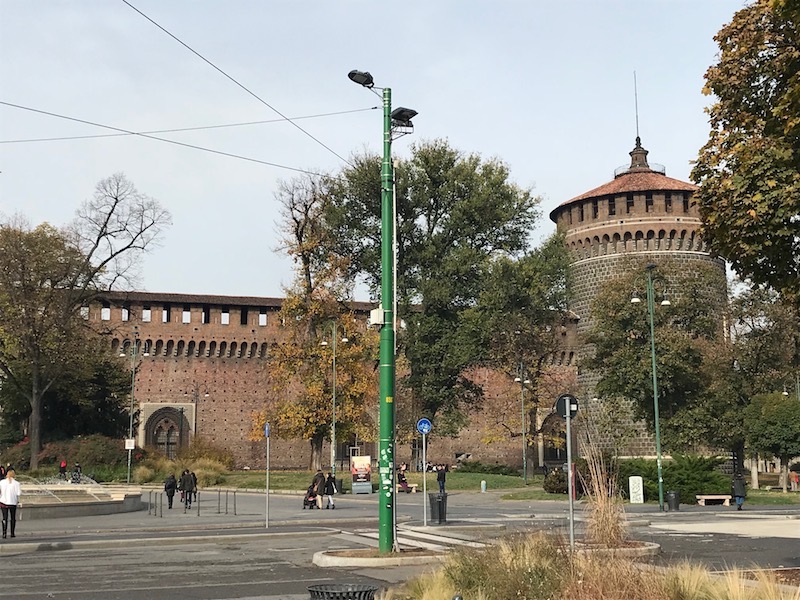
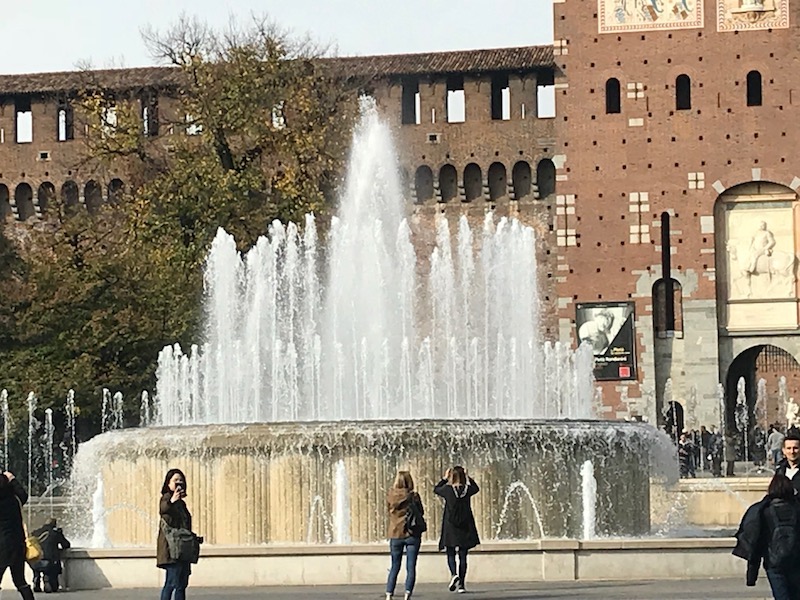
This is the Filarete Tower, which was inaugurated in 1905 and dedicated to King Umberto I who was assassinated 5 years earlier. The clock has a sun motif that was inspired by the Sforza coat of arms. There is also a statue of Saint Ambrose in late 14th century-style, as well as a marble bas-relief of Umberto I on horseback. The painted coats of arms of Francesco, Galeazzo Maria, Gian Galeazzo, Ludovico il Moro, Massimiliano and Francesco II completes the decoration.


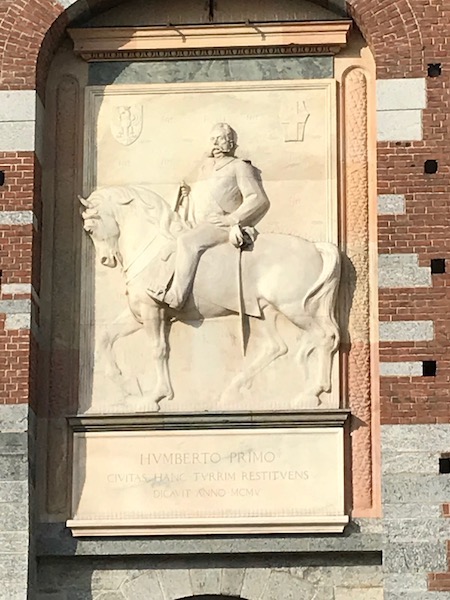
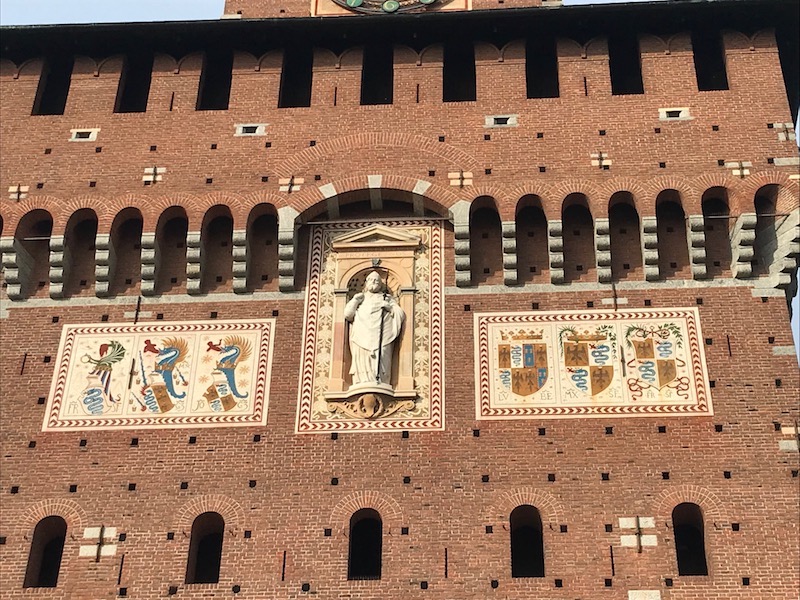
Inside the first defensive walls, and you can see the side wings of the castle, which today mostly house museums. The tower that you see is the Bona Tower. In 1476, the Lord of Milan, Galeazzo Maria Sforza, fell victim to a plot and was stabbed to death. His wife, Bona di Savoia, moved (or fled really) to the safest place within the castle and further fortifioed it with the addition of a tall tower.
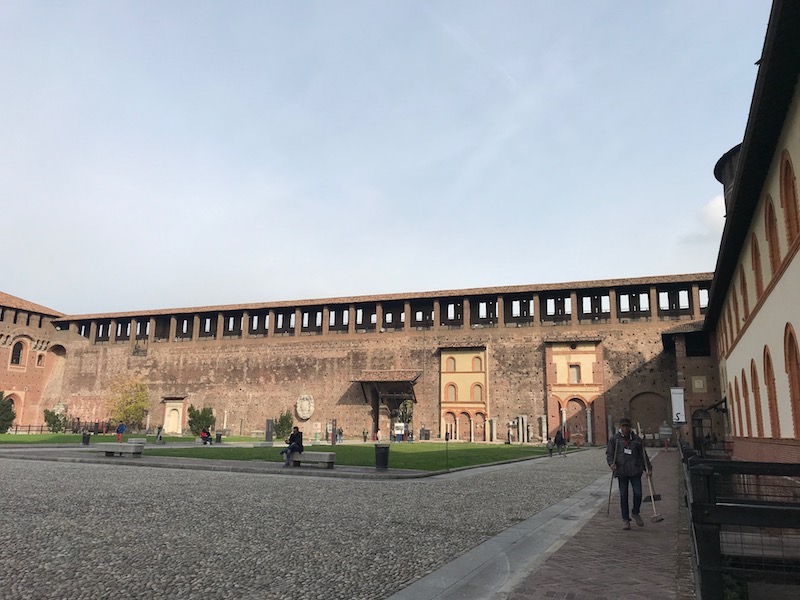
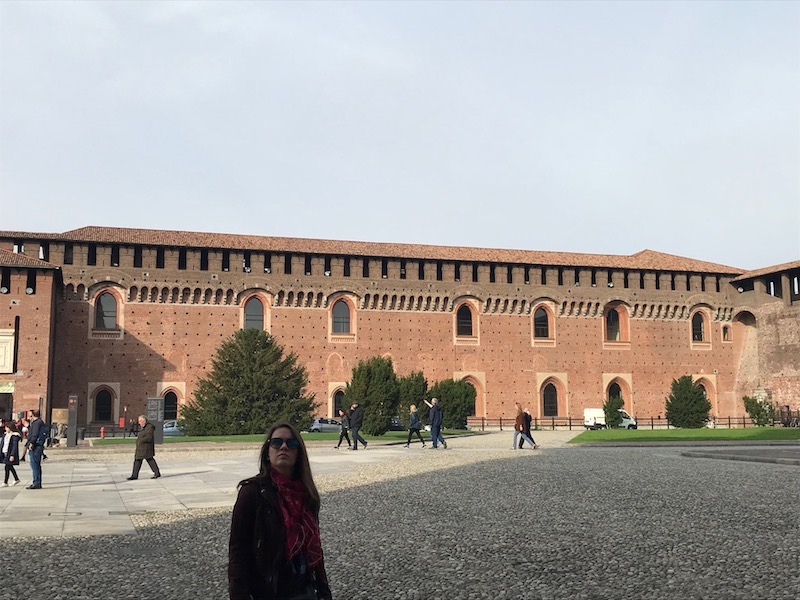

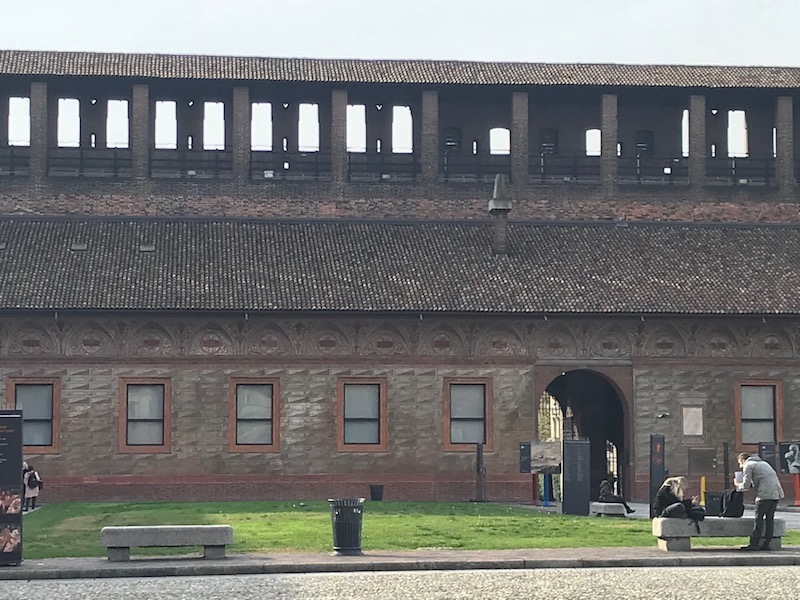
Final interior, the house of Sforza with balcony ... The Corte Ducale is the wing of the castle originally used as ducal residence; it features a court with two loggias, a smaller one at left and a larger one at its end, called Loggiato dell'Elefante due to the presence of a fresco of an elephant. Our guide mentioned that is seems a bit odd to have a balcony in a defensive castle, but that the Duc liked to see the people (mostly the ladies) walking around.
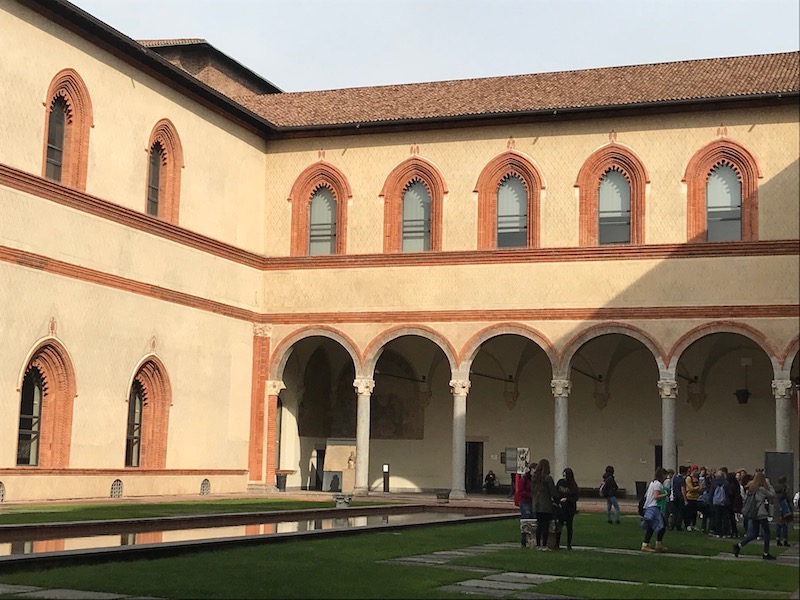
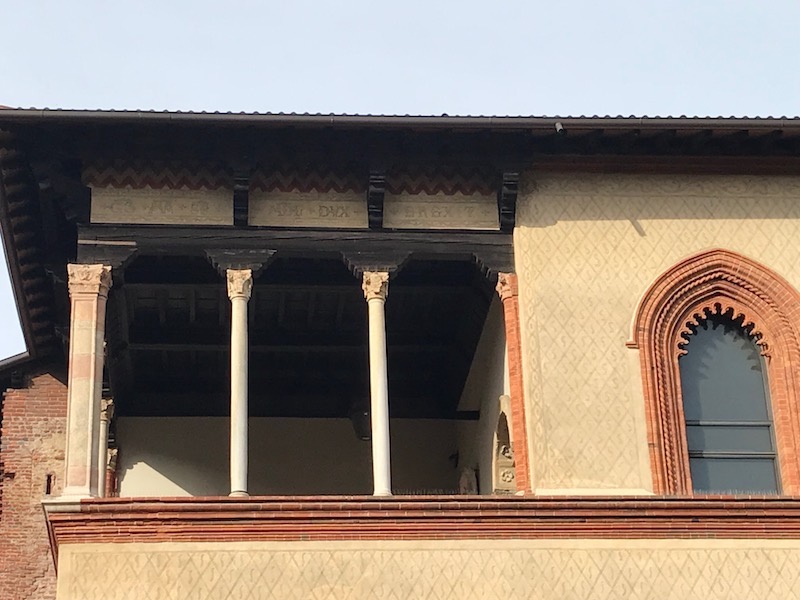
Just outside of the walls, in what used to be the parade ground of the castle, is Parco Sempione. It was named for Corso Sempione, a major thoroughfare of Milan, dating back to the Napoleonic Empire. If you look closely, you can see the triumphal arch, the 19th century Arch of Peace. With the horses on top, it looks like the Brandenburg Gate in Berlin or the Arc de Triomphe du Carrousel in Paris to me.
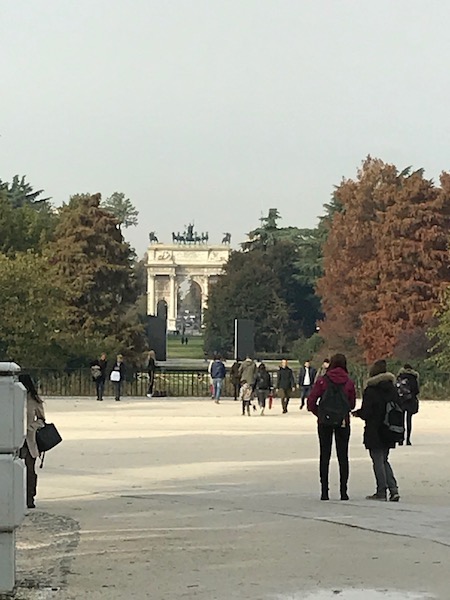
The royal palace has ancient origins. It was first called the Palazzo del Broletto Vecchio and was the seat of city's government during the period of medieval communes in the Middle Ages. It was renovated after the construction of the cathedral. The government then moved to the Sforza Castle (which we just saw) but moved back here in the 16th century. It was rebuilt in 1773 under the direction of Giuseppe Piermarini, who gave it the present neoclassical facade.
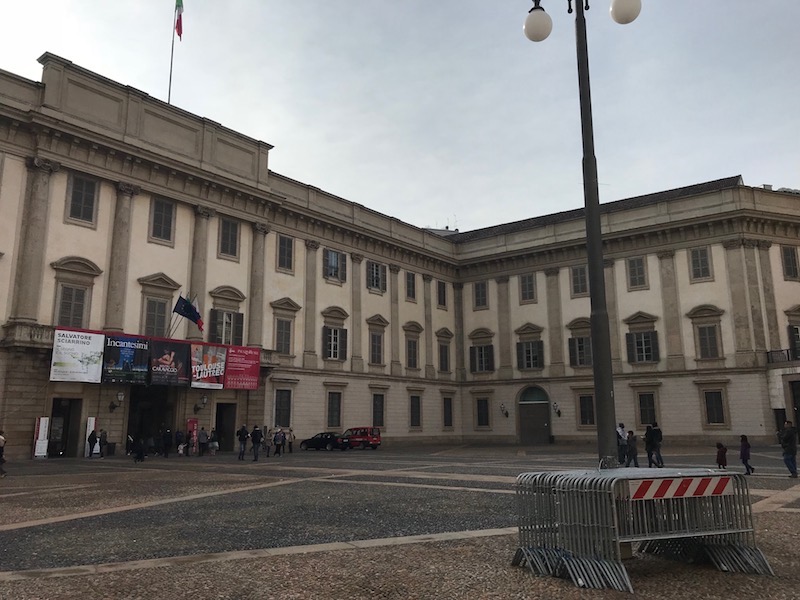
One of the two major sites is The Last Supper. It is a late 15th-century mural painting by Leonardo da Vinci that is in the refectory of the Convent of the Santa Maria delle Grazie. It is one of the most recognizable paintings in the world and represents the scene of The Last Supper of Jesus with his apostles, as it is told in the Gospel of John, 13:21. The painting portrays the reaction given by each apostle when Jesus said one of them would betray him. All twelve apostles have different reactions to the news, with various degrees of anger and shock.
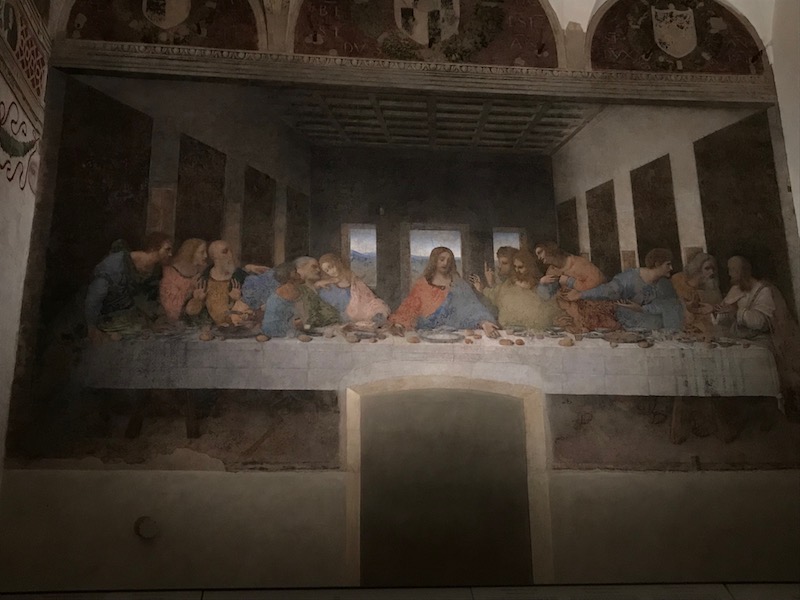

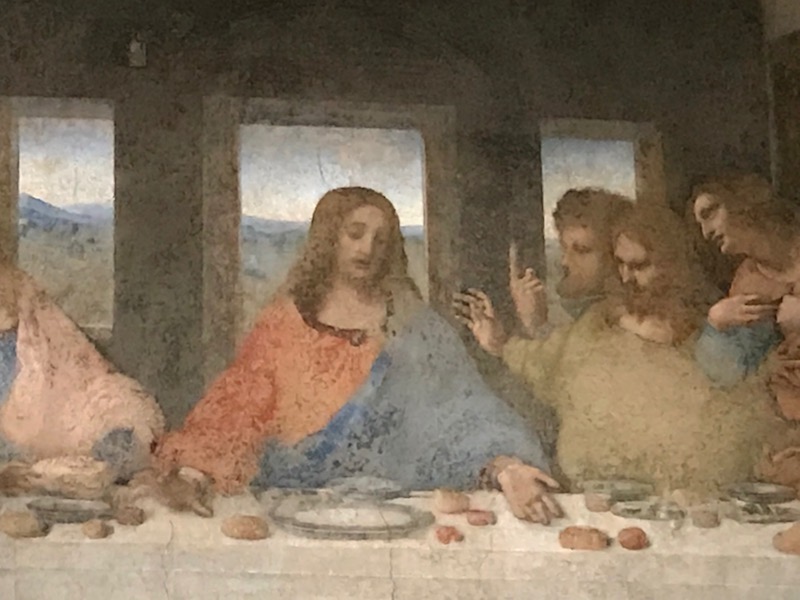

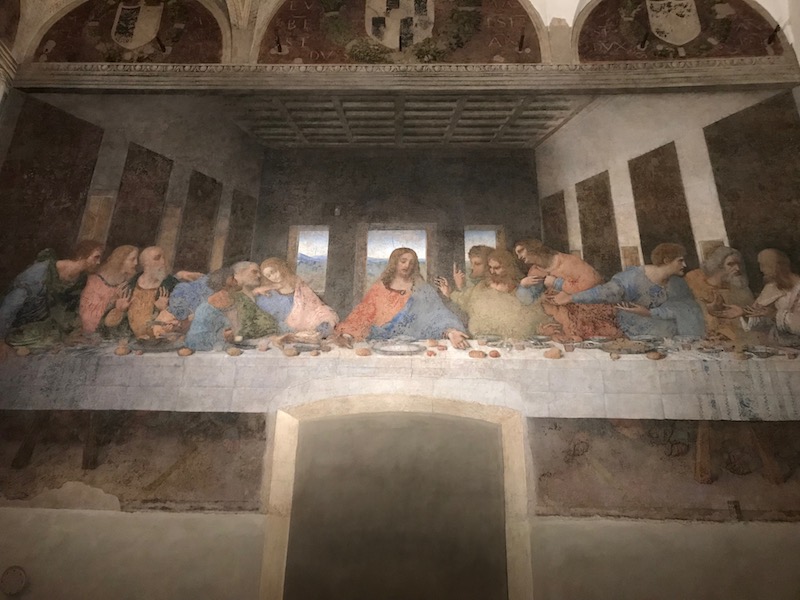
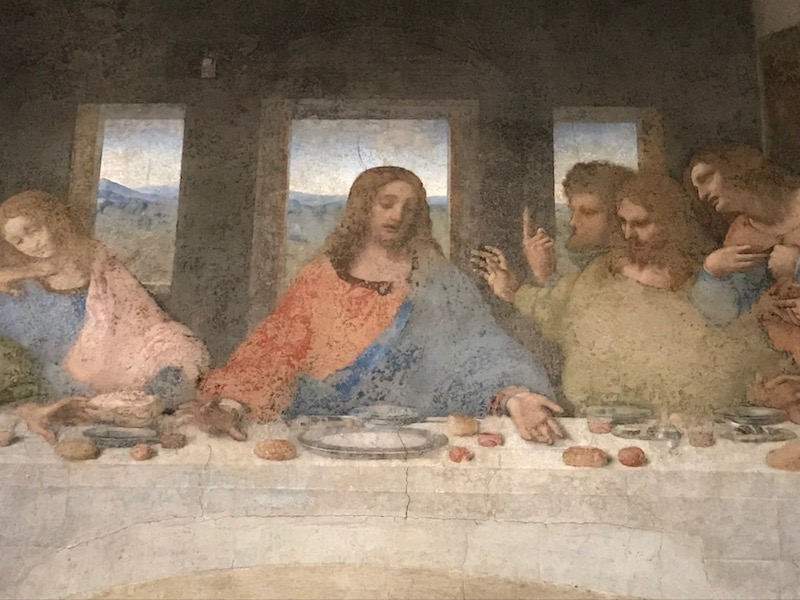
On the left side of Jesus are 2 groups of 3. From the far left are Bartholomew, James (son of Alphaeus), and Andrew, all with a surprised look on their faces. Next comes Judas Iscariot, Peter, and John. Judas is shown a bit in shadow, looking withdrawn and taken aback by the sudden revelation of his plan. He is clutching a small bag, perhaps signifying the silver given to him as payment to betray Jesus, and is tipping over the salt cellar, which may be related to an expression to "betray the salt" meaning to betray one's Master. Peter looks angry and is holding a knife pointed away from Christ, perhaps foreshadowing his violent reaction in Gethsemane during Jesus' arrest. The youngest apostle, John, appears to swoon. Some people have said that John is actually Mary Magdalene (several books including The Da Vinci Code) but daVinci identified each in a manuscript that was found in the 19th century.
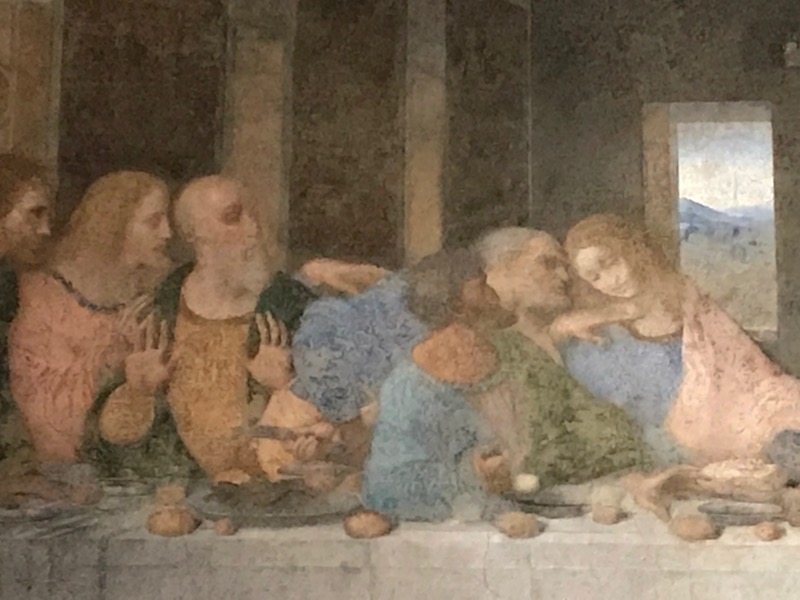
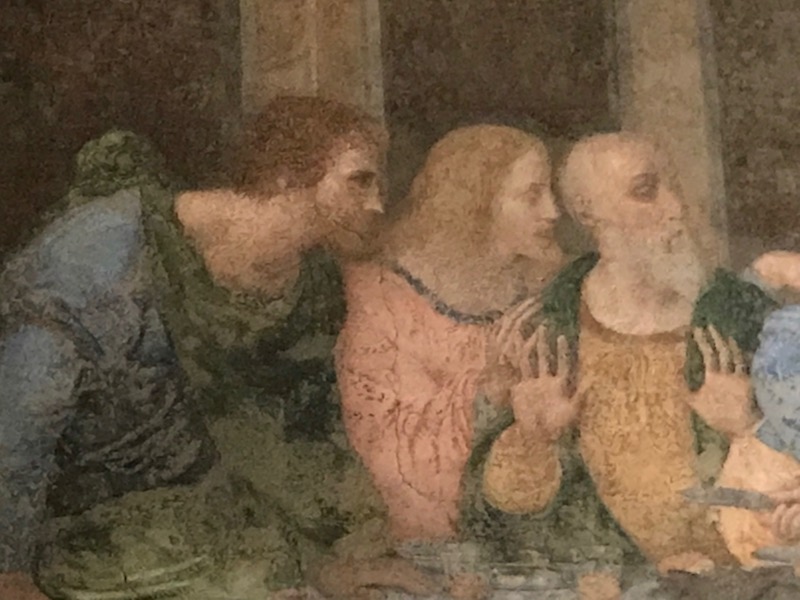
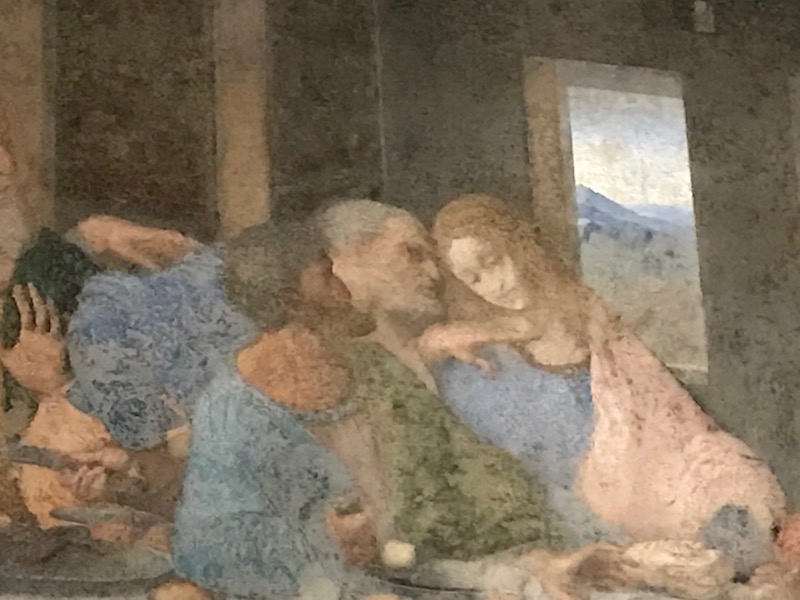
On the right side of Jesus are also 2 groups of 3. The first group contains Thomas, James the Greater, and Philip. Thomas is clearly upset, with the raised index finger foreshadowing his incredulity of the Resurrection. James the Greater looks stunned, with his arms outstretched. Philip appears to be requesting some explanation. The group at the far right side contains Matthew, Jude Thaddeus, and Simon the Zealot. Both Jude Thaddeus and Matthew are turned toward Simon, perhaps to find out if he has any answer to their initial questions.
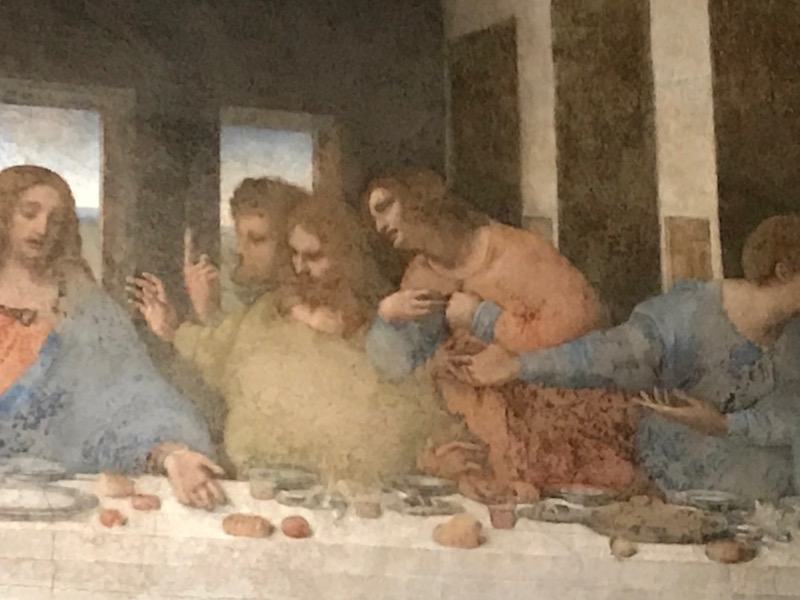
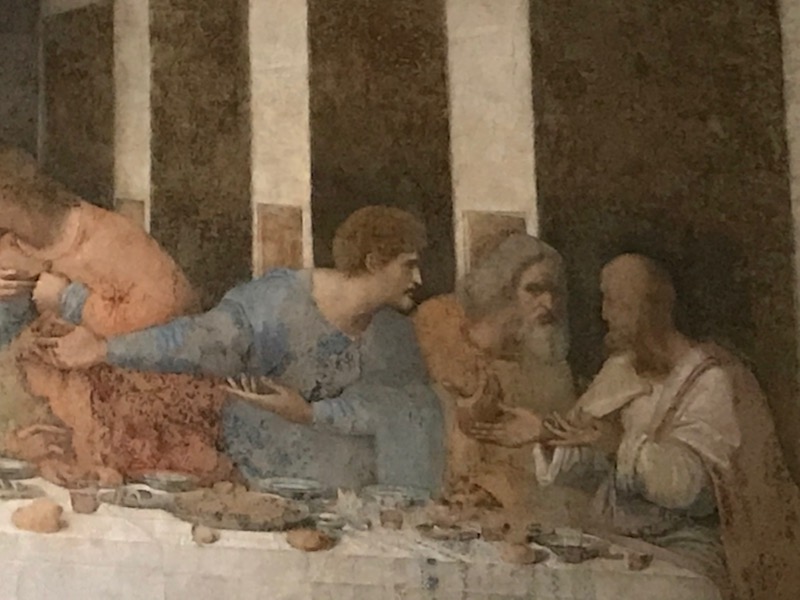

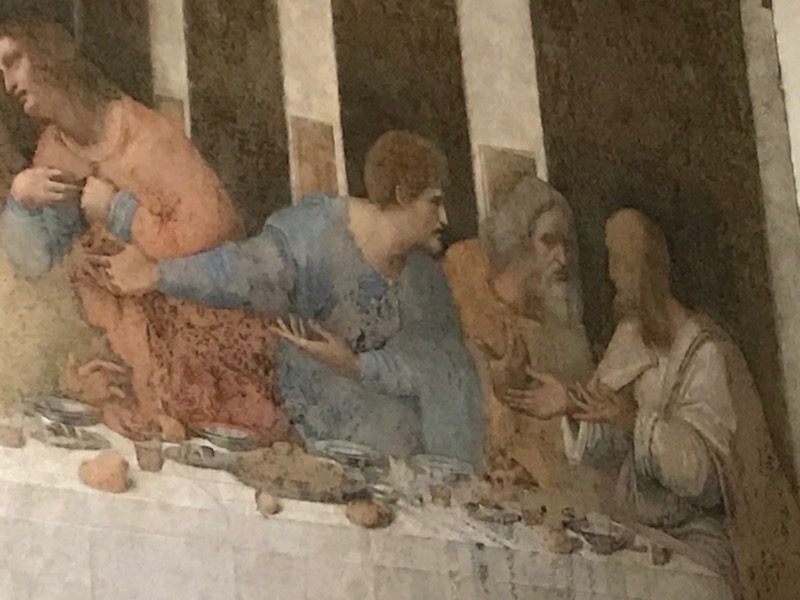
The painting contains several references to the number 3, which represents the Christian belief in the Holy Trinity. The Apostles are seated in groupings of three; there are three windows behind Jesus; and the shape of Jesus' figure resembles a triangle. Due to the fragility of the painting, access is pretty strict .. only so many people in 15 minute intervals, and you have to go through severals sets of doors so that they can tightly control the air within the room.
Within the same room, on the opposite wall, is a fresco of the Crucifixion, signed by Giovanni Donato and dated (1495). There isn't all that much information available (that I could find) on the painting, but it is one of the most significant works by the painter, who was from Milan.
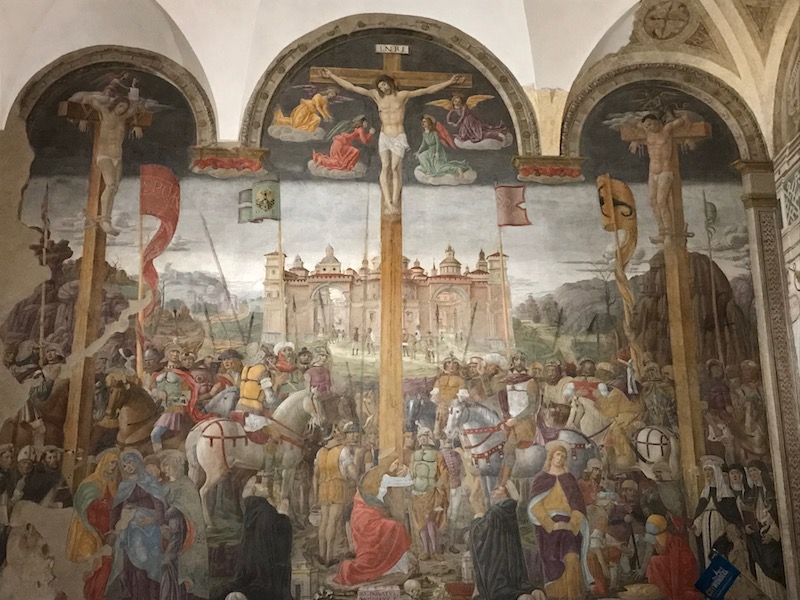
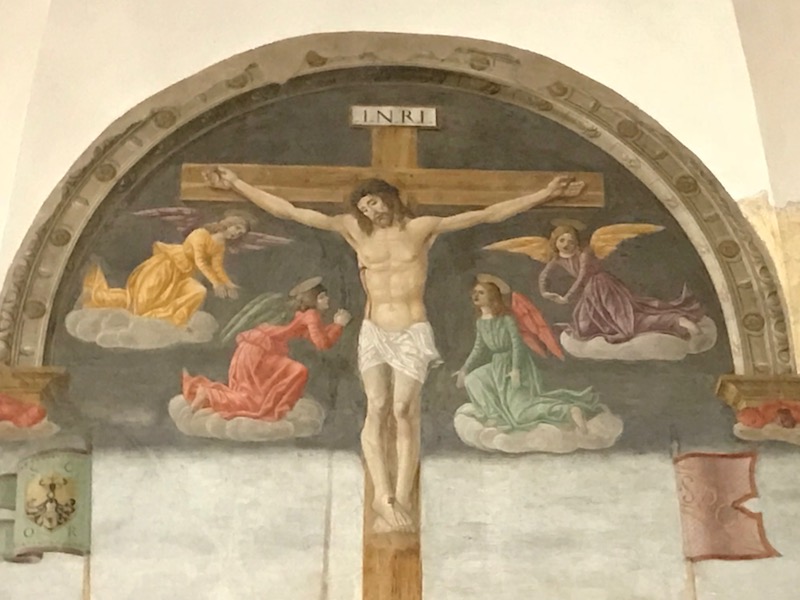
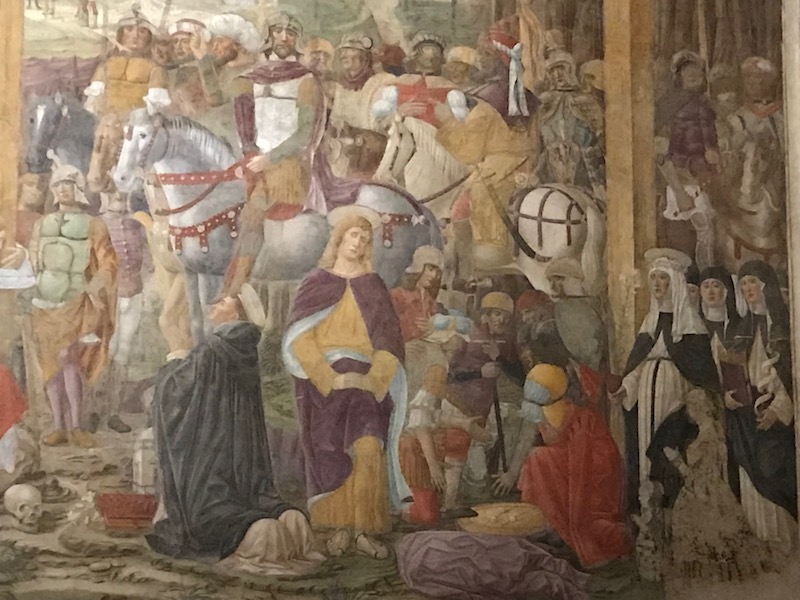

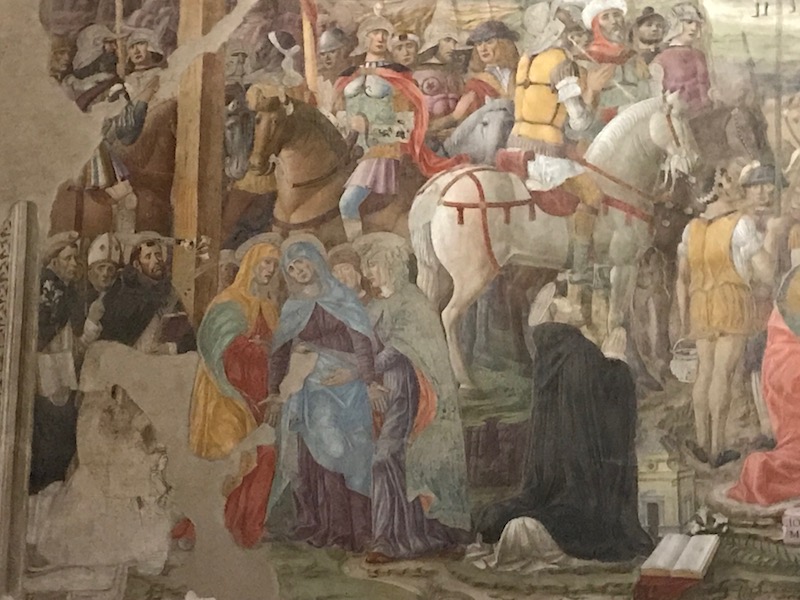
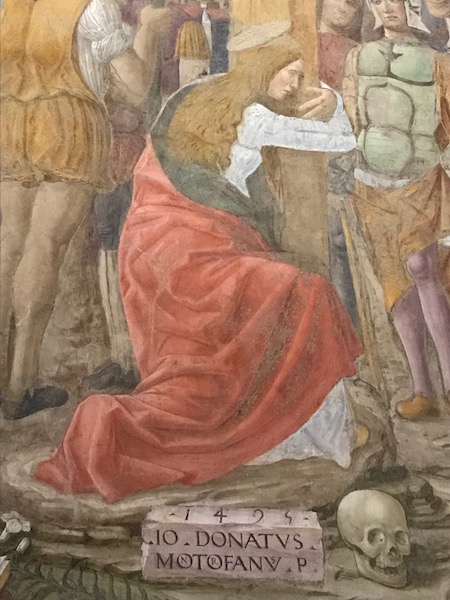
I have a few exterior pictures of the Santa Maria delle Grazie church, but nothing much inside (the main church wasn't open). It is actually the church for a Dominican convent of the same name, which was completed in 1469. During World War II, on the night of 15 August 1943, an Anglo-American aerial bombardment hit the church and the convent. Much of the refectory was destroyed, but some walls survived, including the one that has "The Last Supper", which had been sand-bagged in order to protect it.
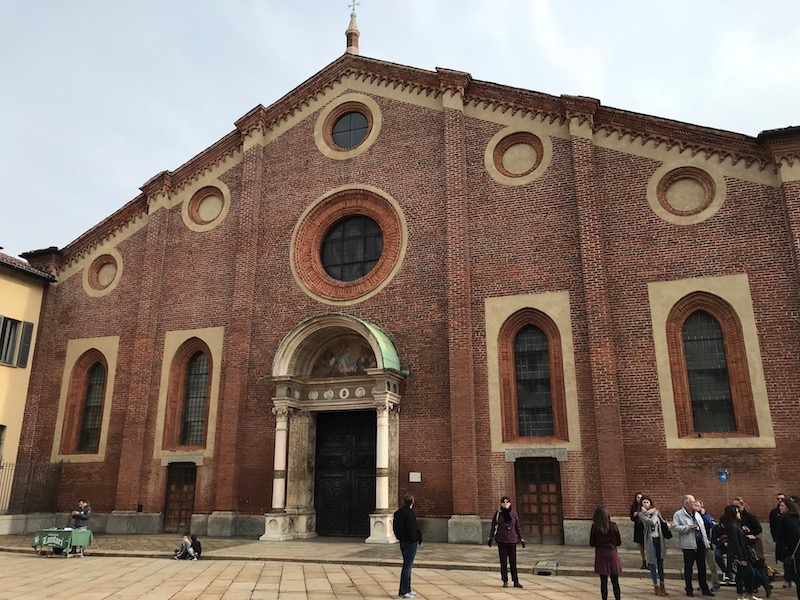

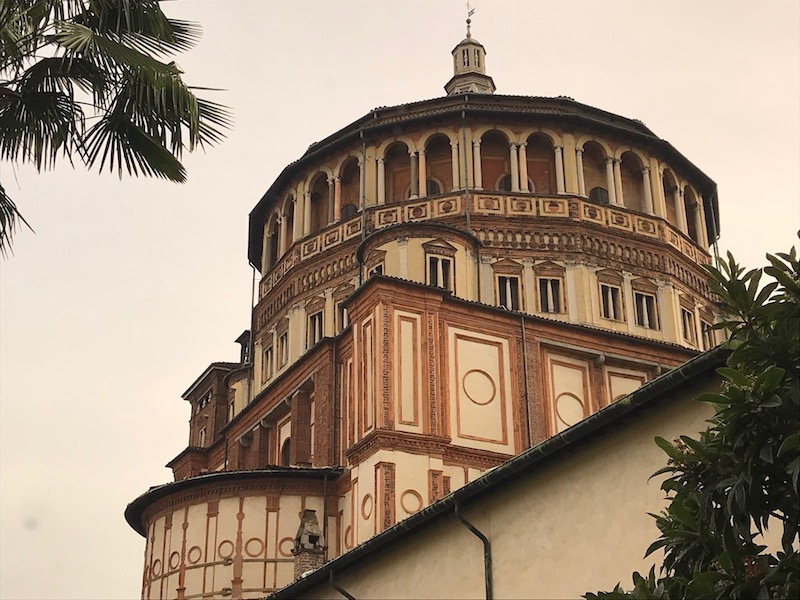

Tonight's dinner was a bit more low-key, at a small place called Pasta d'Autore. It seemed like a little family-run place, fairy small with an open kitchen. We had gotten the reservation through email with the actual owner (Matteo).
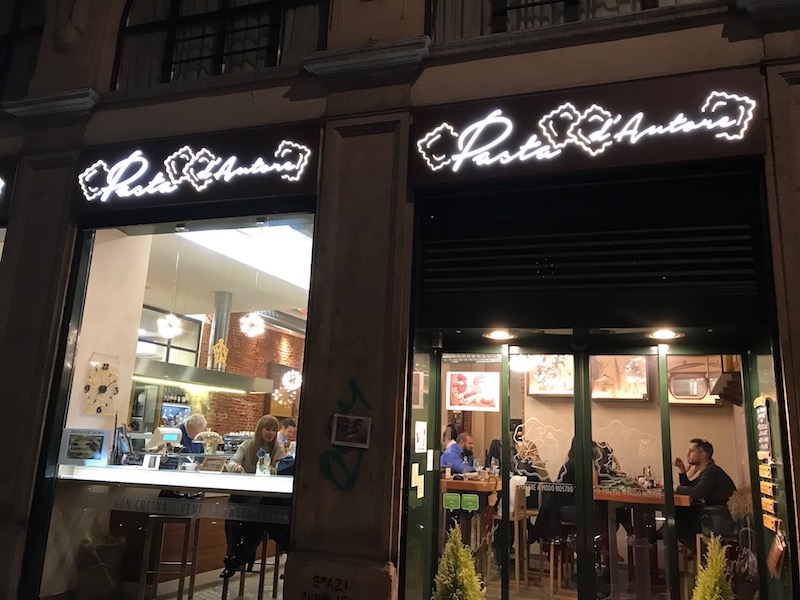
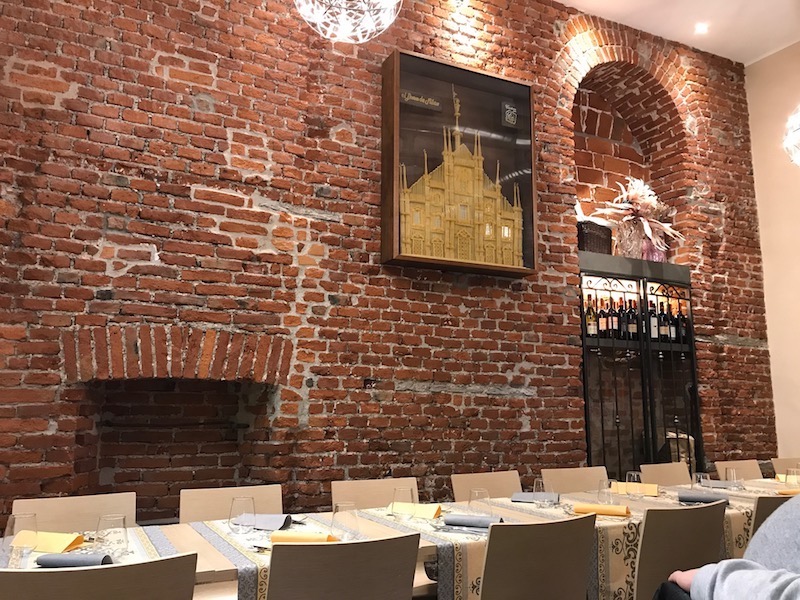
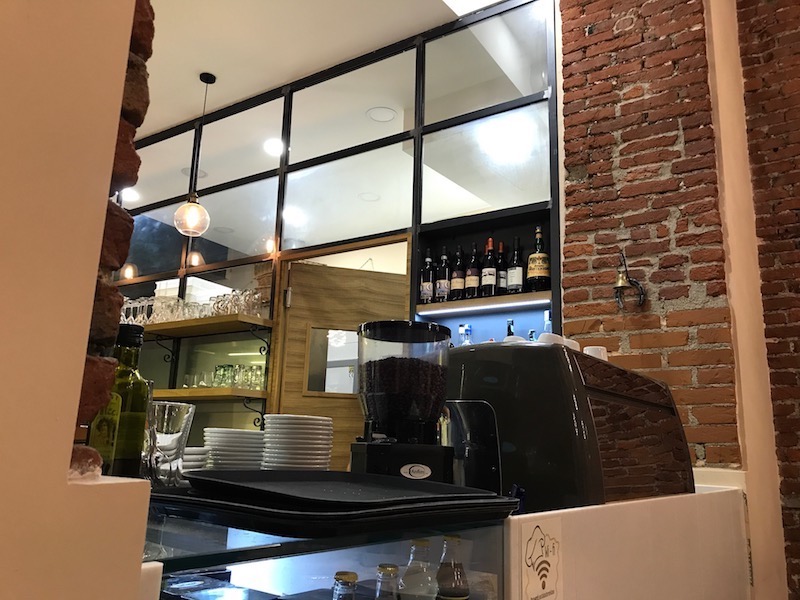
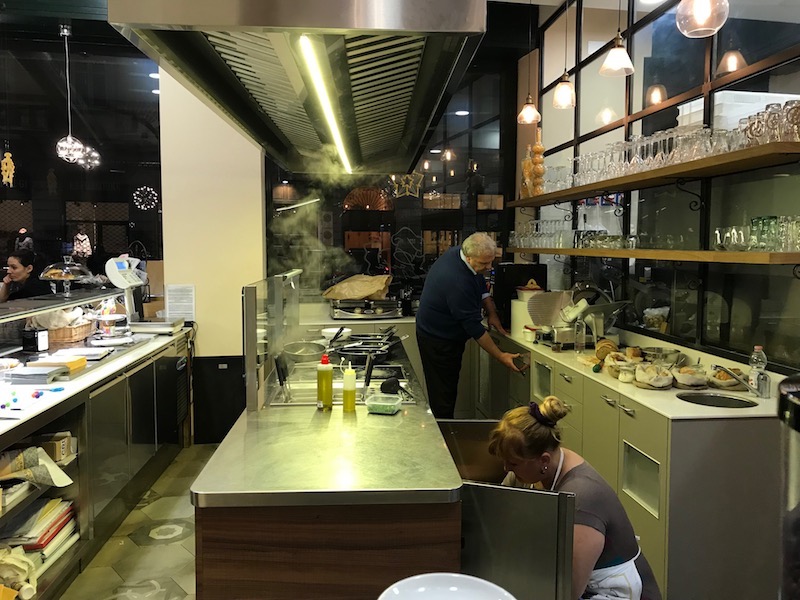
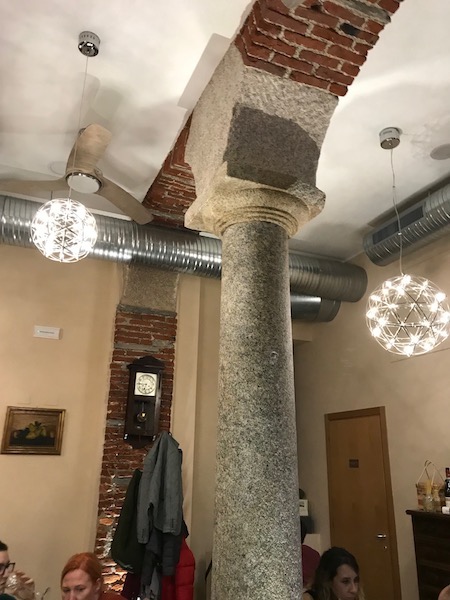
Of course the bread .. and then the server brought over a board with various pasta's on it, explaining which were available, as each day they do a subset of the pasta's. Pick the pasta, and then there are also several different sauces available each night. We got Ravioli with a traditional tomato sauce, and then a short pasta with an Arrabbiata sauce (which ended up just a tad too spicy for me, but a good heat level for Tom).
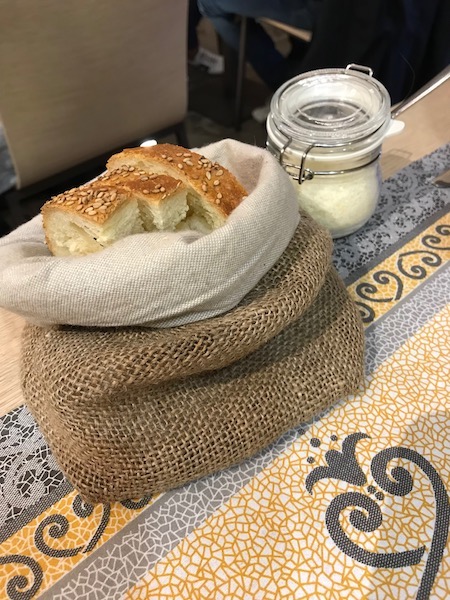


I mentioned family-run ... their website explains it is grandma, mom, and the kids. It also talks about the desserts are "grandma's" cakes. Reviews all RAVED about the Tiramisu but we had just had it before, so we went with an apple cake and a pot of cream. Everything was delicious, and we have this on our list to return to (for different pastas and sauces) next time we are in Milan.


Go straight to Milan Day 4
Go straight to Milan Duomo
Go back to the main Milan page
or go back to the main blog.